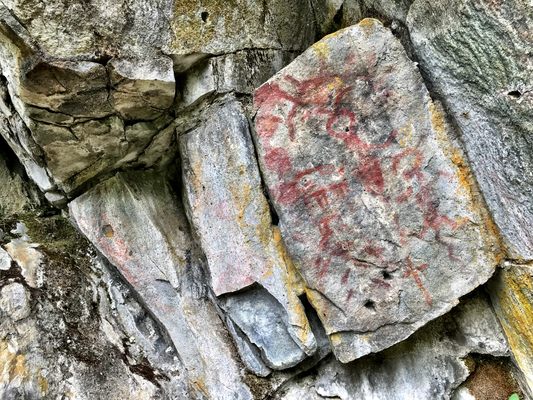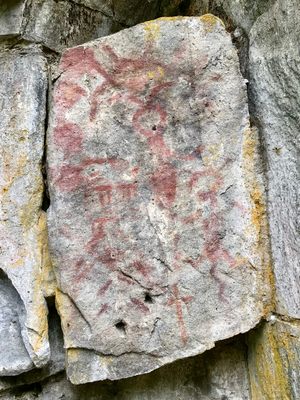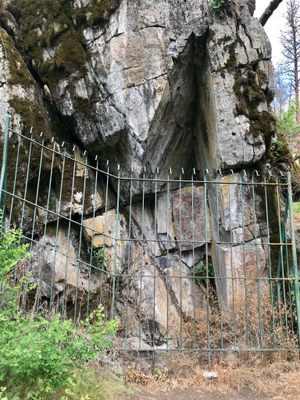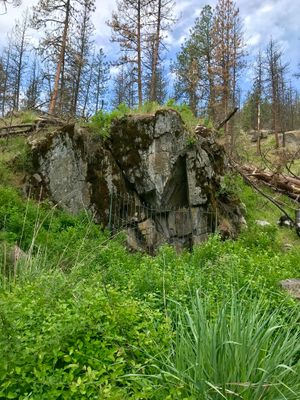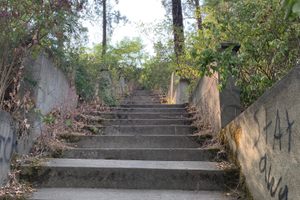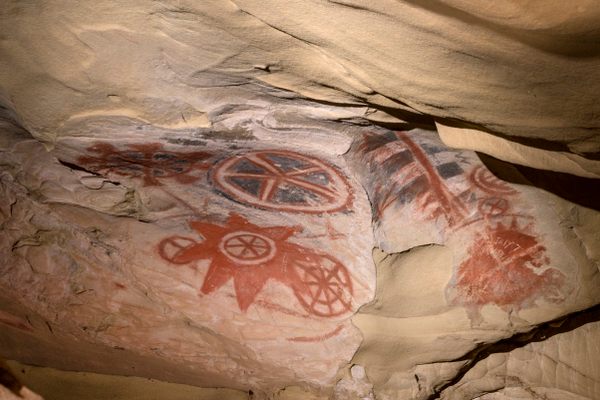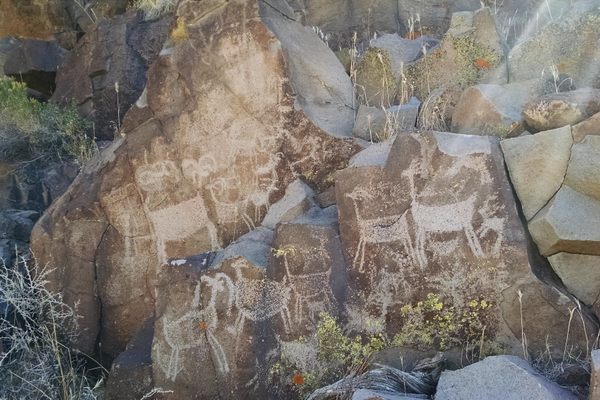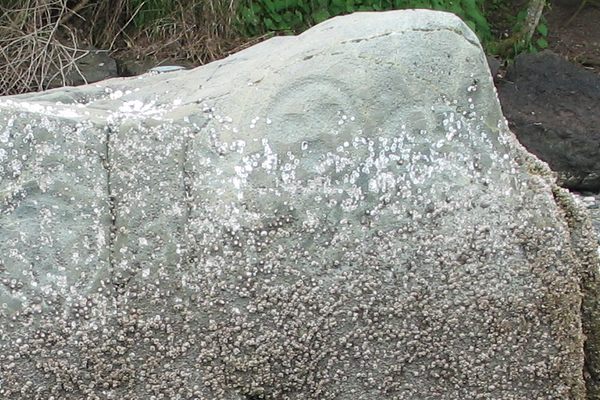About
About 250 years ago, Native Americans living along the Little Spokane River painted figures onto rocks with red paint. The porous rocks absorbed the paint, so the rock art became a permanent feature. They can be still be seen today in the Little Spokane River Natural Area, in the city named for the tribe that created the paintings.
It is believed that members of the Spokane tribe created the paintings around 1750, because the images may depict horses and a cross, signs that European settlers were living in the area. However, the content, meaning, and interpretation of the pictographs are still up for debate.
For thousands of years, the Spokane people lived near the Spokane River in the territory of what is now eastern Washington and northern Idaho. Their tradition territory once extended across more than three million acres of land. The combined effects of disease and conflict reduced their population to a fraction of its former size.
The Painted Rocks site was nominated for the National Register of Historic Places in 1970, citing its significance for having survived over the years intact. Most of the Native American pictographs in the area were located along river banks that were covered in water by dams built in the 20th century.
Related Tags
Know Before You Go
The rock formation containing the paintings is easily accessible from the parking lot of the Little Spokane River Natural Area parking lot, also known as the Indian Painted Rocks trailhead. Look for the metal grate protecting the site. This recreation area is popular with hikers and kayakers. A parking fee or Discovery Pass is required for the parking lot.
Community Contributors
Added By
Published
June 8, 2018
